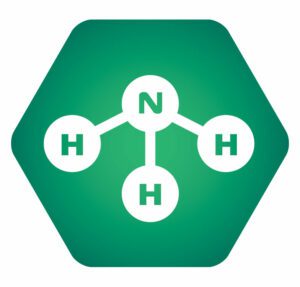PLT Paves Way for Integrators to Earn CO2 Emission Reduction Credits
A University of Georgia study, which evaluated the carbon footprint of poultry farms in the U.S., showed the biggest contributor to greenhouse gas (GHG) emissions (68%) from broiler farms was from the use of fossil fuels, particularly propane gas used for heating during brooding and cold weather1.
While improvements in growth rate and feed efficiency, and efforts to increase the energy efficiency of broiler houses support decreased emissions, there is a significant amount of untapped opportunity – much of which can be found in the manure.

Manage Manure with PLT®, Reduce Emissions
About 10% of poultry carbon emissions are from manure. Given that approximately 10.2 million tons of poultry litter is generated annually in the U.S., manure management presents significant, untapped opportunity in sustainability efforts.
In addition to methane and nitrous oxide, ammonia is also produced from manure and accounts for 39% of the total ammonia in the atmosphere, by some accounts2. Ammonia is a costly problem in broiler houses in several ways that also contribute to GHG emissions.
Ammonia:
Increases ventilation and fuel costs
Decreases performance and feed efficiency
Negatively impacts bird health and welfare
Jones-Hamilton Co has worked with environmental consultants and University researchers to identify the full scope of emissions reductions from PLT, a product that also happens to be the only biodegradable, EPA Safer Choice amendment on the market.
PLT Litter Amendment Supports Sustainability at Multiple Levels
Applying PLT lowers litter pH and eliminates ammonia for improved air quality while increasing the nitrogen value of litter. But that is just the beginning.
PLT is a safe, bio-degradable, EPA Safer Choice product that has the proven ability to:
Reduce Ammonia Emissions
100 lbs. of PLT binds 14 lbs. of ammonia
Less Fuel, Less CO2
Without the need to ventilate ammonia, fuel use decreases. 1-ton applied PLT = decrease of 665 gallons propane = CO2 emission reduction of 16,000 lbs.3 (winter)
Kilowatt Reduction
1 ton of applied PLT reduces energy usage by 4,350 kWh.
Increase Value of Litter as Fertilizer
PLT-treated litter retains more plant-available nitrogen, increasing its value as a fertilizer source and decreasing the need for fertilizer production. Every 100 lbs. of applied PLT generates 55 lbs. of ammonium sulfate fertilizer.
Reduce VOC Emissions
Poultry manure contains five oxygenated volatile organic compounds (VOCs): ethanol, methanol, methylamine, dimethylamine and trimethylamine. PLT use reduces VOC emissions by at least about 20% with some decreases of 30% to 40%.
Avoid Phosphorus-Based Limitations
In areas where phosphorus levels of manure can limit its land application as fertilizer due to runoff concerns, PLT stands above the competition by maintaining lower Total-P over time due to ammonium sulfate accumulation.
KEEP AMMONIA FROM ROBBING FEED CONVERSION
Ammonia can have severe detrimental effects on feed conversion and weight gain with 50 ppm of ammonia reducing FCR by as much as 10 points.
1 point FC = +/- 1,100 tons of corn reduced in 1 year of feed production – an annual savings of $250,000*
Take Credit for What You're Already Doing
When you use PLT in your complexes, it contributes greatly to your company sustainability goals and enables CO2 emissions credits. If over the course of a year, your complexes applied 1,000 tons / 2,000,000 pounds of PLT® – Poultry Litter Treatment, you could claim:

Ammonia Emission Reduction
You would reduce ammonia emissions into the environment by 140 total tons over the course of the year.

CO2 Emissions Reduction
Given that 1 ton of applied PLT reduces propane use in winter by 665 gallons, which equates to 16,000 lbs. CO2 emissions, and assuming that propane costs $2.50 per gallon, you would reduce CO2 emissions by 8,100 tons at a savings of $831,250 on fuel in cold weather months**.

Energy Savings
Given that 1 ton of applied PLT reduces energy usage by 4,350 kWh and the average cost of kilowatt hours is about 0.1609 in 2023, your application of PLT could reduce your energy costs by $699,915.
The Social Cost of Carbon
The value of the damage caused by CO2 emissions or the value of reducing emissions is defined by the EPA***. Based on their parameters, the emissions reductions from the defined PLT use above is valued at $413,000.
The Bottom Line
Propane savings ➜ $831,250
kWh savings ➜ $699,915
Social Value ➜ $413,000
Environmental Return on Investment ➜ 3.65 ROI
Safe. Effective. Sustainable.
As pressure mounts for the poultry industry to become more energy efficient and sustainable, the search for effective and affordable solutions intensifies. Companies are finding that some of their seemingly small, innocuous daily choices have the potential to result in significant positive net changes for producers, integrators and the environment.
PLT is a non-hazardous, EPA Safer Choice product that is 100% biodegradable, and is the only amendment that can be applied around birds. Safe for people. Safe for birds. Better for the environment.
1 https://extension.uga.edu/publications/detail.html?number=B1382#title3
2 Clarisse et al. (2009)
*Estimated based on 6.5-lb bird, starting @ 1.7 FCR (1.69 target); 65% corn diet, 1 million birds/week treated with PLT; 40 bushels of corn = 1 ton; corn currently priced @ $225/ton
3Dr. Matthew J. Franchetti and Somik Ghose, Comparative Life Cycle Greenhouse Gas Emission and Benefits from Poultry Litter Treatment (PLT®) Application in Poultry House Operation Sustainability Research Group, Department of Mechanical, Industrial and Manufacturing Engineering, The University of Toledo
**assuming six cold weather months annually
***The EPA and other federal agencies use estimates of the social cost of carbon to value the climate impacts of rulemakings. It is a measure, in dollars, of the long-term damage done by a ton of carbon dioxide (CO2) emissions in a given year. This dollar figure also represents the value of damages avoided for a small emission reduction (i.e. the benefit of a CO2 reduction). In 2022, one ton of CO2 emissions was valued at $51.
